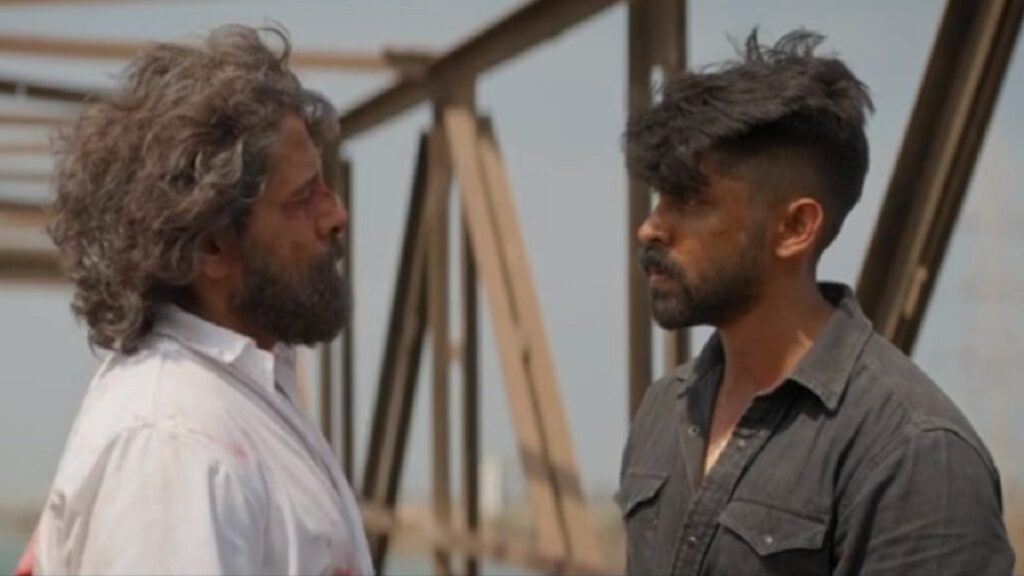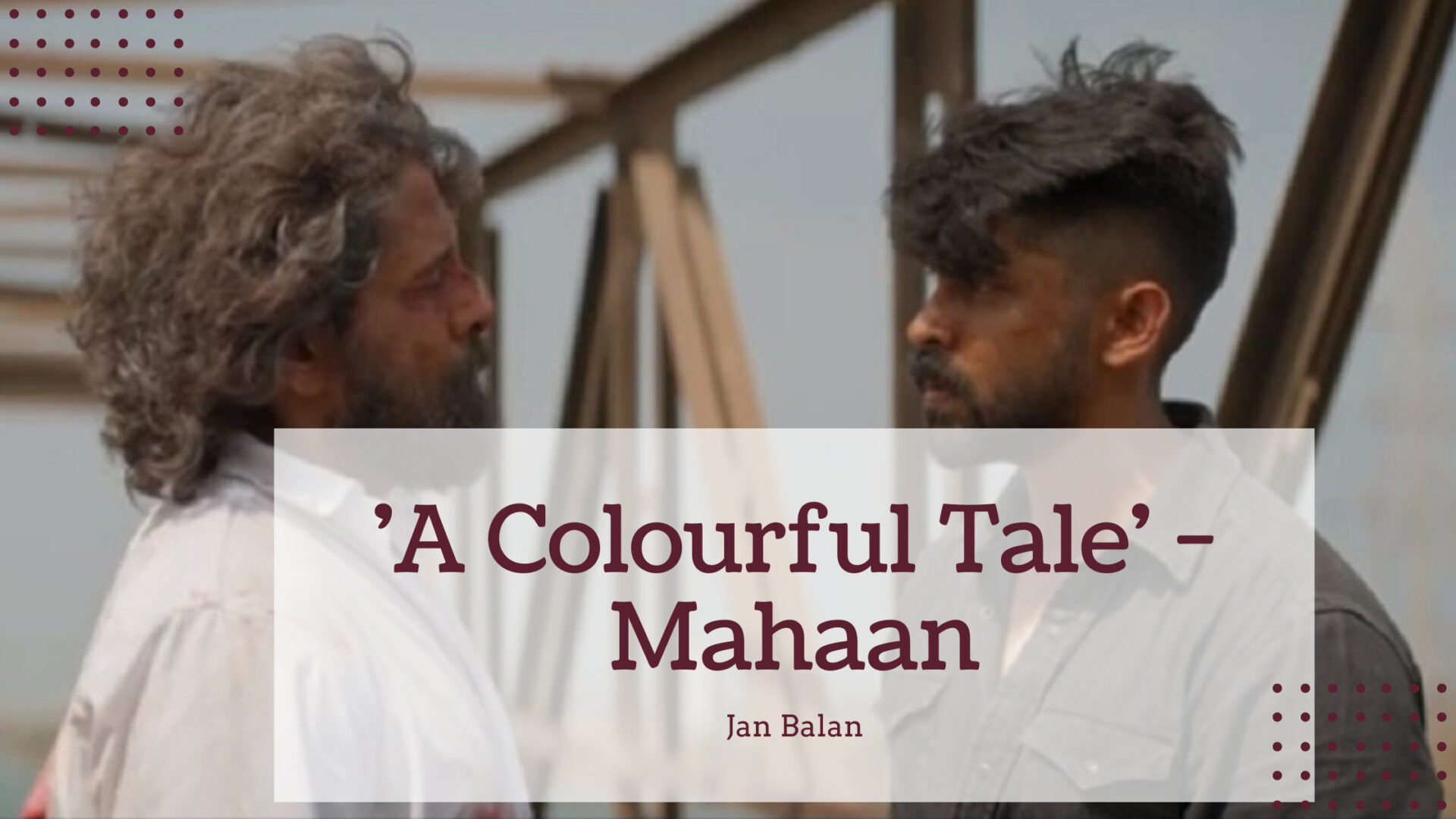A Colourful Tale – Mahaan. It has many layers, metaphors and ideologies. The fight between extreme ideological dogma and supreme hedonistic exuberance. There is a little philosophy finishing with a Buddhist reference. Mahaan is the story of the eponymous hero, Gandhi Mahaan. He goes from a disciplined and hen-pecked teacher to a liquor baron and gangster.
‘A Colourful Tale – Mahaan’
They use red, yellow, white, and black when they are discussing these ideologies. We might see the use of red and yellow in the song, ‘Soorayaatam.” The concept of yellow and red when Mahaan and Dada have not seen each other for 20 years. The yellow on Mahaan when he sees his son was happiness, whereas for Dada when he sees his father, it was anger. We can also assume, yellow for penance and red for anger.
Costume – Mahaan
The costume team has done a tremendous part. Gandhi Mahaan will have a dream at the beginning of the movie. While watching the scene, we might find it is just a dream. But we can notice the costume, Vikram wearing the same costume from ‘Fistful of Dollars’s Joe’. Karthik Subburaj uses colours in a lot of things. When Gandhi Mahaan and Dad meet after 20 years, Mahaan wears a black shirt and Dada wears a white shirt.

According to society, especially within his families standards, Mahaan is a sinful person. He owns a liquor store. He is also responsible for degrading his father and father-in-law’s ideology. However, Dada wore white to show that he is a sinless/ pure person. Naatchi, who is a follower of Gandhian’s principle raised him. He is a cop, who is willing to demolish the liquor mafia.
Towards the end of the film, we see Mahaan wearing white and Dada wearing black. Mahaan is aware that he is not a good person. He has committed violence and has been a terrible husband and father. Yet Mahaan admitted to his mistakes and wants to learn from his mistake. The white implies that he has admitted to his mistakes and going to learn from them. Gandhi Mahan does not follow most of Gandhian’s principles. He followed one principle.
“Freedom is not worth having if it does not include the freedom to make mistakes”.
Dada’s shirt is black which implies how sinful he is but also denies his mistakes. Even though he never openly denies his mistakes. He always has an excuse to commit a mistake to show his view and how “justifiable” from his point of view. From a simple disagreement to people living their lives. Especially the dialogue towards the end where Mahaan says to Dada that he knows he is bad but Dada is much worse.
Dialogue – Mahaan
Gandhi Mahaan’s father, father-in-law and his wife, Naatchi nitpick mistakes around them. They protest liquor prohibition by following Gandhi’s principles. But they are not ready to accept ‘Gandhi’s principles of free will. They are ready to forgive someone and accept them. Once they find, Mahaan drank, they leave him.

Gambling Metaphor – Mahaan
There is a gambling metaphor. Karthik Subbaraj intercuts timelines with the face of playing cards. It promptly disappears somewhere along the way.
- Bobby Simha – Sathyavan – Ace card – The highest value in the deck of cards
- Vikram – Gandhi Mahaan – King card – Leader
- Vettai Muthukumar – Gnanam – Jack Card – Political card
- Dhruv – Dada – Joker – Can be easily substituted or played.
Foretelling – Mahaan
I love when a movie, foretells its story in the first 15-20 mins. This movie does it in a simple way. The film opens up in 1968. Mohandas is leading a rebellion. He rebels against the production of liquor in the state of Tamil Nadu. On the other hand, young Gandhi is helping his friend, Sathya to win a rummy game.
On one fine day, young Gandhi makes Sathya lose the match purposefully. The opponent player to Sathya steals Gandhi’s dog, ‘Joker.” He threatens Gandhi to help him win instead of Sathya. So Gandhi does as per his word in order to rescue his dog, Joker. This creates doubt, so Sathya ends up thrashing Gandhi. Once Sathya leaves the scene, we find them in the village panchayat sort of setup. Later in the film, we find, Young Gandhi gets Joker and asks him to attack the young Gnnam. So young Gandhi, Sathyavaan and Gnanam get scars on their face.
Climax – Mahaan
There is something about making mistakes, living a true life, loyalty, fatherhood, revenge, bravery, belief, god, ethics of crime, extremism, playing with people’s feelings — the ideas keep on coming, none amounting to anything substantial. None really underpinning or supporting the film.
Click ‘Mahaan‘ to watch
to read other articles, click ‘Movies’
Subscribe to our email newsletter to get the latest posts delivered right to your email.

Comments